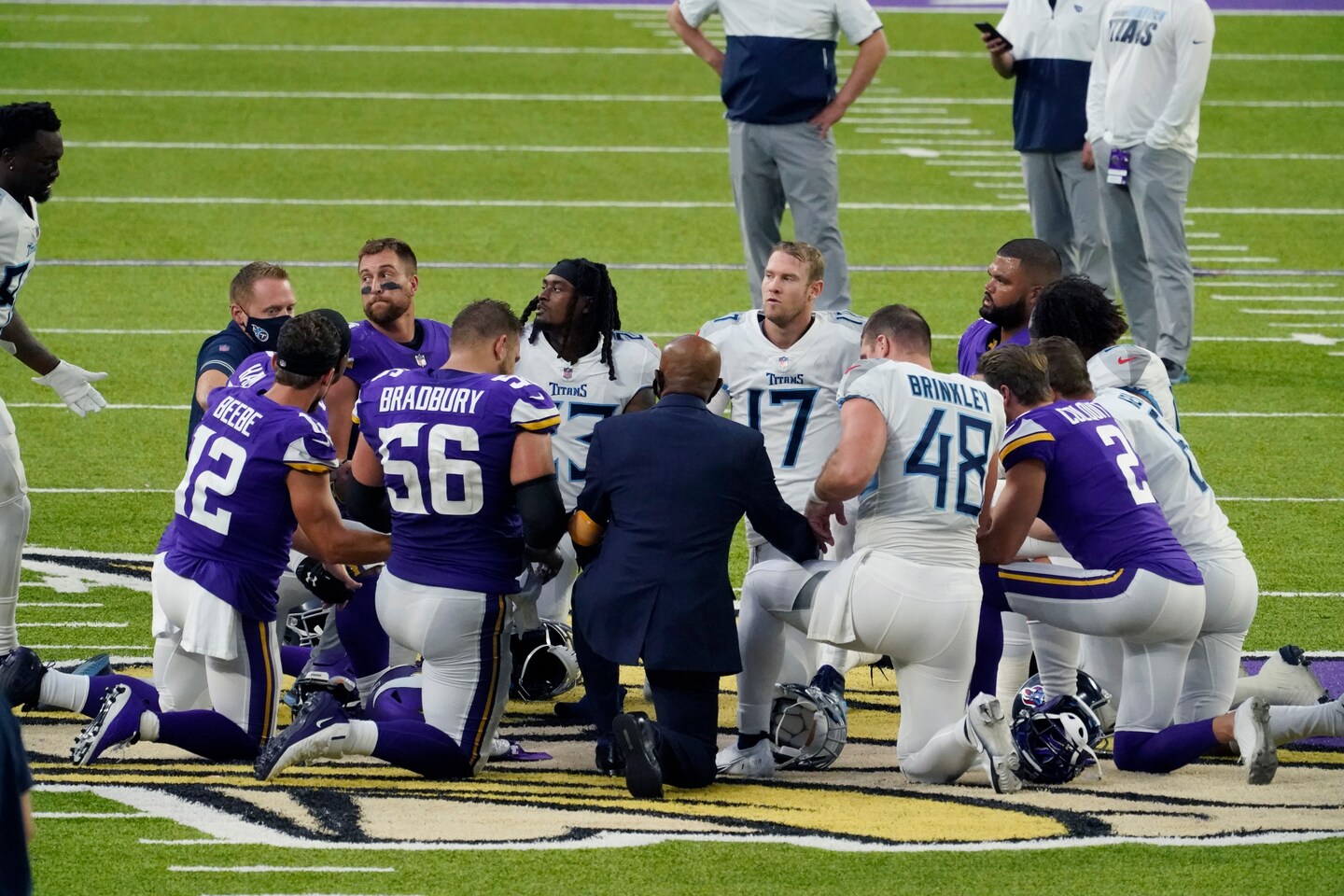The NFL is a league of strict routine. That’s not going to work in a pandemic.

What lies ahead, though, might look more like the Mid-American Conference than the NFL. “Wednesday Night Football?” That’s probably what it’s going to take, a world in which the previously unthinkable becomes completely palatable. Baseball just completed a 60-game regular season that seven months ago would have been considered blasphemous. We work from home and wear masks. Ho-hum. Turns out a global pandemic will create new norms.
Rational people — from Ivy League epidemiologists to Vegas oddsmakers — would predict the positive tests of four Titans players and five staff members won’t be the last of the NFL season. As Commissioner Roger Goodell wrote Tuesday, both realistically and matter-of-factly, in a memo to clubs: “This was not unexpected.” The virus is still here. It spreads easily through the air. Football players and staff work closely together, fly together, take buses together, tackle each other. The NFL has not created a bubble. So here’s an outbreak.
There must be, first and foremost, concern for the infected. Tennessee Coach Mike Vrabel said Wednesday some of the players who tested positive were experiencing flu-like symptoms, but he added, “We anticipate that they will feel better shortly.” That would be great because we can’t forget the fact that more than 206,000 Americans have died of covid-19, the disease caused by the coronavirus. It’s not impossible that an NFL player could fall, too.
What the NFL is doing in the wake of the outbreak — shutting down the facilities of both the Titans and the Minnesota Vikings, Tennessee’s opponent this past Sunday, and delaying the Titans’ upcoming game to allow for more testing — seems wholly responsible. There’s a way that this single incident in this given week could exist in a vacuum, upsetting nothing around the rest of the league, and life would go on.
“It’s one of those deals,” Titans safety Kevin Byard said Wednesday on a Zoom call with reporters. “Whenever they tell us to play, we’re going to have to go out there and play.”
Sounds simple. But this episode also shows how delicate this all is. Even as the Titans prepare for the Steelers not knowing when they will next be able to practice in person, look at the factors that make Tennessee’s situation more tenable than it might be.
The shutdown of the facility came on a Tuesday, typically a day off for players, the day coaching staffs start building the game plan for the following week. The first eight positives were identified five full days before the scheduled game against Pittsburgh. That’s plenty of time for the teams and the league to read and react — not only following existing protocols to quarantine the infected and further test everyone else but also adjusting physical and mental preparations for a game that will be delayed by minimally one or two days.
But here’s what I would bet the mortgage on: Not all positive tests are going to be returned on a Tuesday. Players and coaches are tested every day. It’s only logical, then, that a few positive tests could surface on, say, a Saturday. The league couldn’t reasonably kick a game to a Wednesday and then have those two teams ready to play again the following Sunday, right?
Football is violent. You could argue the two most important aspects to a season are rest and recovery. Further adjustments would be necessary. In a league in which coaches and players are programmed and rigid to the point that specific days are associated with specific tasks — “Wednesday” means the week’s first practice, “Saturday” means the final walk-through, etc. — being malleable is foreign. Yet here we are.
“We live one week at a time,” Steelers Coach Mike Tomlin said Wednesday.
Don’t we all.
Given that NFL players and staff aren’t in bubbles — they’re allowed to live at home and stay with their families, etc. — it’s actually remarkable the Titans’ outbreak is the first of the season. In the most recent data that’s available, the NFL said 36,664 tests were administered to 7,845 players and club personnel between Sept. 13 and Sept. 19. Total positives: five. Zero were players.
“In football terms, I like to say it’s like we scored a touchdown on our first drive,” Allen Sills, the NFL’s chief medical officer, told a group of Washington Post reporters and editors via Zoom in late August, when the league’s testing data similarly provided reason for optimism. “There’s an awful lot of the game going in front of us, and there’s still so many variables we don’t know.”
Which is akin to how baseball had to approach its season: with caution and flexibility and discipline. The outbreaks there were worse than the NFL has experienced — 18 Miami Marlins and 10 St. Louis Cardinals, and those were just the players. Both of those teams made the National League playoffs. It’s possible to persevere.
But the NFL, with its interlocking, 16-games-in-17-weeks schedule, doesn’t have some of the tools that were at baseball’s disposal. To reach October, the Cardinals — after playing zero games over a 16-day period — had to play 11 doubleheaders, each consisting of two seven-inning games, the rest of the way. The Titans’ bye week is Oct. 25. The Steelers’ bye week is Nov. 1. If they couldn’t play this week, the NFL couldn’t say, “Fine, just play back-to-back games of three quarters each a week from Sunday.”
So think about anything and everything. If a game must be canceled, move bye weeks. Change opponents. Shorten the regular season. Push the playoffs back two weeks — or more.
What awaits the NFL? By itself, the Titans′ outbreak doesn’t mean the season will look wholly different. But who would bet against it?






